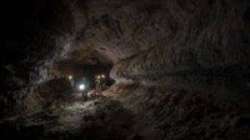Massive lava tubes found on Mars, Moon; can protect from cosmic radiation
Researchers have discovered lava tubes underneath the floors of both the moon and mars. According to the study, these tubes are large enough to be the homes of planetary bases as humanity, even more, explores the cosmos.

Researchers have discovered lava tubes underneath the floors of both the moon and mars. According to the study, these tubes are large enough to be the homes of planetary bases as humanity, even more, explores the cosmos. According to reports, these tubes are probably concerning 100 and 1,000 occasions the dimensions fo these on Earth and can protect people from cosmic radiation. The tubes are also up to 100 feet wide and upwards of 25 miles lengthy.
“Lava tubes could present steady shields from cosmic and solar radiation and micrometeorite impacts which are usually going on on the surfaces of planetary bodies,” the study’s guide creator, Franceso Sauro, stated in an assertion. “In addition, they have terrific potential for giving an ecosystem in which temperatures do not change from working day- to nighttime. Room businesses are now intrigued in planetary caves and lava tubes, as they stand for an initial phase toward future explorations of the lunar surface area (see also NASA’s task Artemis) and toward finding lifetime (earlier or current) in Mars subsurface.”
As reported by swords today, Sauro and the other scientists looked at the tubes in a range of various regions on Earth: Hawaii, the Canary Islands, the Galapagos Islands, Australia, and Iceland.
“We measured the dimension and gathered the morphology of lunar and Martian collapse chains (collapsed lava tubes), working with digital terrain styles (DTMs), which we obtained via satellite stereoscopic photographs and laser altimetry taken by interplanetary probes,” study co-writer, Riccardo Pozzobon, added. “We then in comparison these details to topographic studies about comparable collapse chains on the Earth’s surface and to laser scans of the inside of of lava tubes in Lanzarote and the Galapagos. This information allowed to build a restriction to the marriage amongst collapse chains and subsurface cavities that are even now intact.”